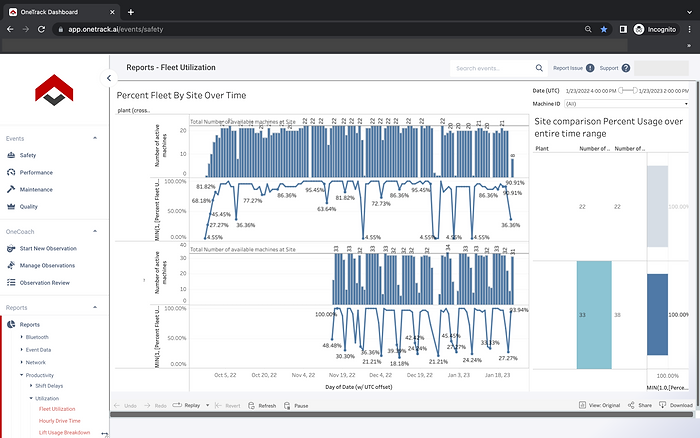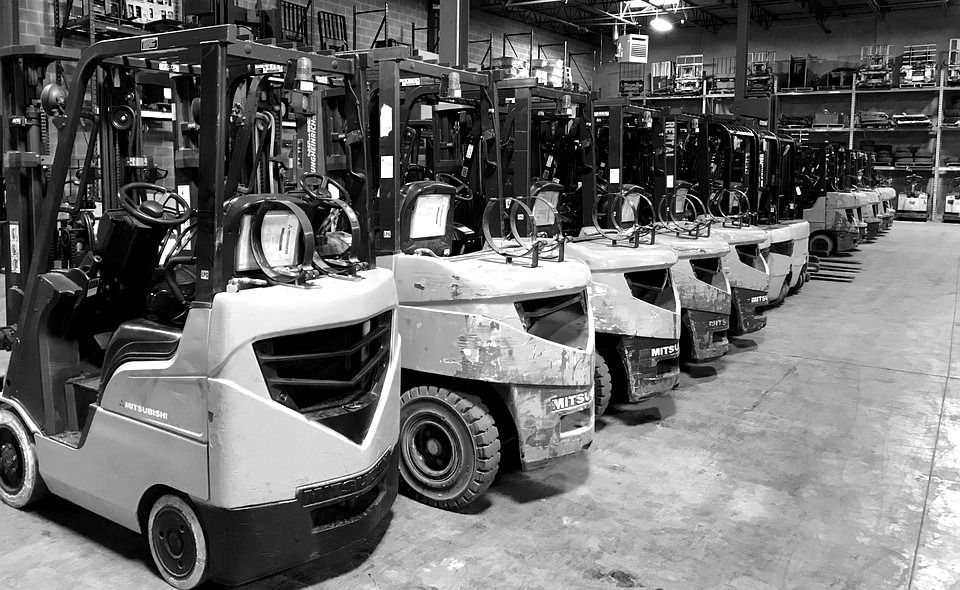Take the Blindfold Off Your Warehouse Operation
Forklifts are a significant expense for each warehouse and having units that are not used costs money.
They could be relocated to another location or dropped off a lease program.
Before adjusting your fleet size, you need to know more about your fleet utilization. How much time during the day is a lift in motion? For all the time spent idle, what is the operator doing? Is this productive or unproductive idle time?
Unproductive idle time is one of the biggest financial losses for an operation. It is also the hardest to track.
OneTrack brings visibility to your fleet utilization. Usage of this data can refine processes, improve productivity, and identify operational anomalies. Below are three key benefits of monitoring your forklift fleet utilization:
1) Utilization: idle time vs drive time
2) Rightsized Fleet
3) Process anomaly detection
Forklifts are a vital part of most warehouses and logistics providers. They help move large quantities of products quickly and efficiently. Without them, many businesses would struggle to keep up with customer demand.
Given their importance, it's no surprise that forklifts are also a significant expense for most companies. That's why it's so important to monitor your forklift fleet utilization. Doing so can help you save money and improve your overall operations. Let's take a closer look at three key benefits of monitoring your forklift fleet utilization:
1) Utilization: idle Time vs. Drive time
One of the main benefits of monitoring your forklift fleet utilization is reviewing idle time vs drive time.
This information is crucial for understanding how your business is using its resources. For example, if you notice that your forklifts are sitting idle for long periods, is this idle time process related or something else?
Alternatively, drive time can be viewed the same way. Are your operators taking the most direct paths, or are they taking longer routes to move items from point A to point B? Reviewing this information regularly can help you make more informed decisions about your fleet and use resources effectively.
2) Rightsizing
Monitoring your forklift fleet utilization can also help you save money. This data will bring to light if you have the right size fleet or if downsizing or relocating units to another location needs to be considered.
If you notice that your forklifts are sitting idle for long periods, or if large numbers of lifts are not being used, it may be cheaper to downsize the fleet or relocate them to another warehouse for more effective utilization. Doing so can help you free up valuable space at your current facility while ensuring that your business has the forklifts it needs to operate effectively.
3) Process Anomaly Detection
Finally, monitoring your forklift fleet utilization can help you understand where there might be improvements in process, product locations, or overall warehouse flow.
This data is valuable for understanding productivity levels at your facility.
If you see that in certain work codes or tasks, lifts are only being used for a brief period, you may want to consider refining your processes so that those lifts can be put to better use. Likewise, if you see that lifts are being driven frequently but not utilized very much, you may want again want to drop them off a lease program forklifts.
Conclusion
Monitoring your forklift fleet utilization is important for shippers and logistics providers. Bringing a visual understanding of what is happening when your fleet is being utilized helps in three key areas. Utilization: Idle Time vs Drive time, Rightsizing fleet, and process anomaly detection.
Understanding this data more clearly can help you save money by reducing idle time and optimizing resource usage. Additionally, it can also help improve productivity by understanding how often lifts are being used and how much time they spend in motion each day.

OneTrack provides our customers with critical metrics that enable them to receive a comprehensive understanding of the performance and status of their forklift fleets.
The data is presented in an easily digestible format that simplifies decision-making and promotes clarity.









